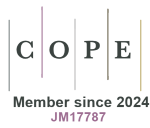Unraveling the Enigma: how can ChatGPT perform so well with language understanding, reasoning, and knowledge processing without having real knowledge or logic?
DOI:
https://doi.org/10.33393/ao.2023.2618Keywords:
AI (Artificial Intelligence), CDSS (Clinical Decision Support Systems), ChatGPT, LLM (Large Language Models), Neuro-symbolic Artificial Intelligence, Artificial Intelligence generated differential diagnosisAbstract
Artificial Intelligence (AI) has made significant progress in various domains, but the quest for machines to truly understand natural language has been challenging. Traditional mainstream approaches to AI, while valuable, often struggled to achieve human-level language comprehension. However, the emergence of neural networks and the subsequent adoption of the downstream approach have revolutionized the field, as demonstrated by the powerful and successful language model, ChatGPT.
The deep learning algorithms utilized in large language models (LLMs) differ significantly from those employed in traditional neural networks.
This article endeavors to provide a valuable and insightful exploration of the functionality and performance of generative AI. It aims to accomplish this by offering a comprehensive, yet simplified, analysis of the underlying mathematical models used by systems such as ChatGPT. The primary objective is to explore the diverse performance capabilities of these systems across some important domains such as clinical practice. The article also sheds light on the existing gaps and limitations that impact the quality and reliability of generated answers. Furthermore, it delves into potential strategies aimed at improving the reliability and cognitive aspects of generative AI systems.
References
- Hornik K, Stinchcombe M, White H. Multilayer feedforward networks are universal approximators. Neural Networks. 1989;2(5):359-366. https://www.sciencedirect.com/science/article/pii/0893608089900208 (Accessed June 2023). DOI: https://doi.org/10.1016/0893-6080(89)90020-8
- DEEP MIND Mathematics, Machine Learning & Computer Science: The Universal Approximation Theorem. https://www.deep-mind.org/2023/03/26/the-universal-approximation-theorem/ (Accessed June 2023).
- Devlin J, Chang M-W, Lee K, Toutanova K. BERT: Pre-training of Deep Bidirectional Transformers for Language Understanding. 2018; arXiv:1810.04805 https://doi.org/10.48550/arXiv.1810.04805 (Accessed June 2023).
- Vaswani A, Shazeer N, Parmar N, et al. Attention is all you need. 31st Conference on Neural Information Processing Systems (NIPS 2017). https://papers.nips.cc/paper_files/paper/2017/file/3f5ee243547dee91fbd053c1c4a845aa-Paper.pdf
- Radford A, Narasimhan K, Saliman T, Sutskever I. Improving language understanding by generative pre-training. 2018. https://cdn.openai.com/research-covers/language-unsupervised/language_understanding_paper.pdf (Accessed June 2023).
- Xie N, Yang J, Sun Q. A 13-year-old boy with subacute-onset spastic gait. JAMA Neurol. 2021;78(9):1151-1152. https://doi.org/10.1001/jamaneurol.2021.1953 PMID:34180959 DOI: https://doi.org/10.1001/jamaneurol.2021.1953
- Wang D-Q, Feng L-Y, Ye J-G, Zou J-G, Zheng Y-F. Accelerating the integration of ChatGPT and other large-scale AI models into biomedical research and healthcare. MedComm Future Med. 2023;2(2):e43. https://doi.org/10.1002/mef2.43 DOI: https://doi.org/10.1002/mef2.43
- Hitzler P, Eberhart A, Ebrahimi M, Sarker MK, Zhou L. Neuro-symbolic approaches in artificial intelligence. Natl Sci Rev. 2022;9(6):nwac035. https://doi.org/10.1093/nsr/nwac035 PMID:35673530 DOI: https://doi.org/10.1093/nsr/nwac035
- Jacob A. Language Models as Agent Models. 2022. arXiv:2212.01681v1. https://doi.org/10.48550/arXiv.2212.01681 (accessed June 2023).









